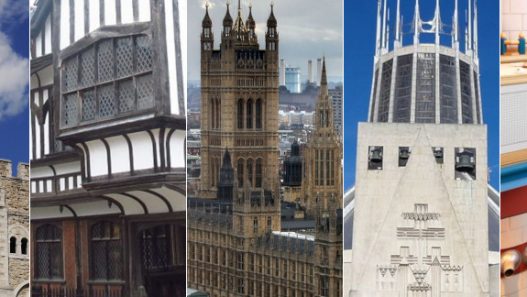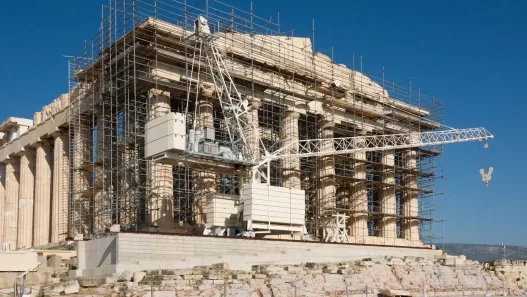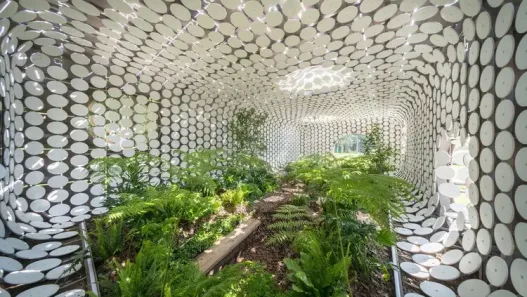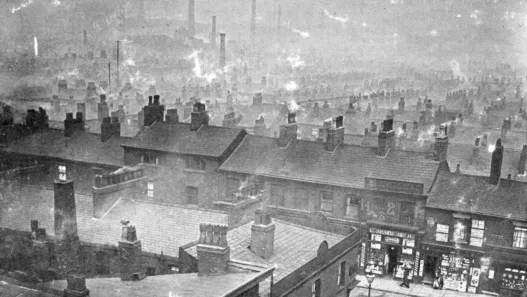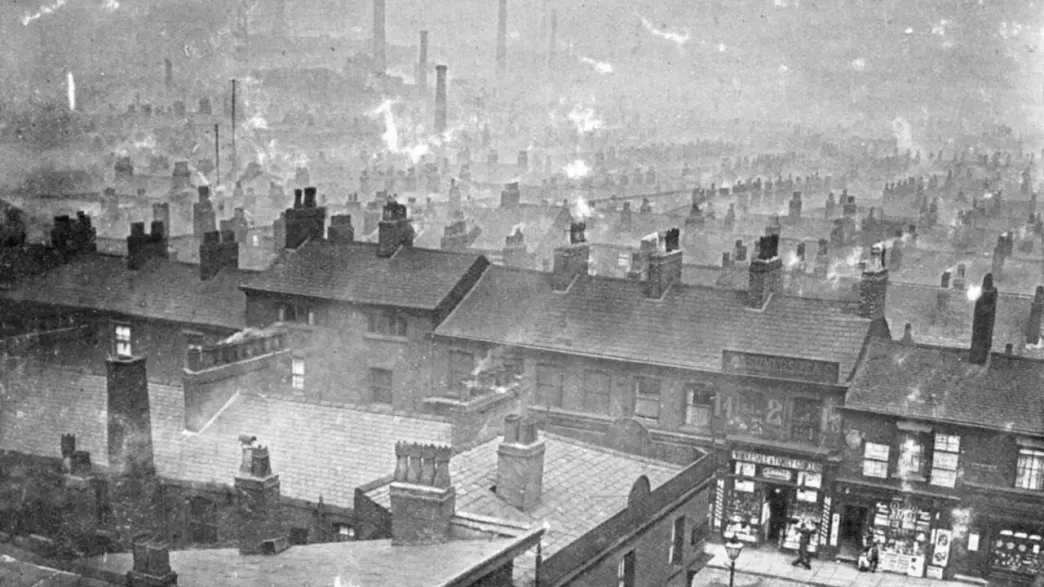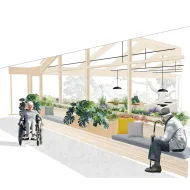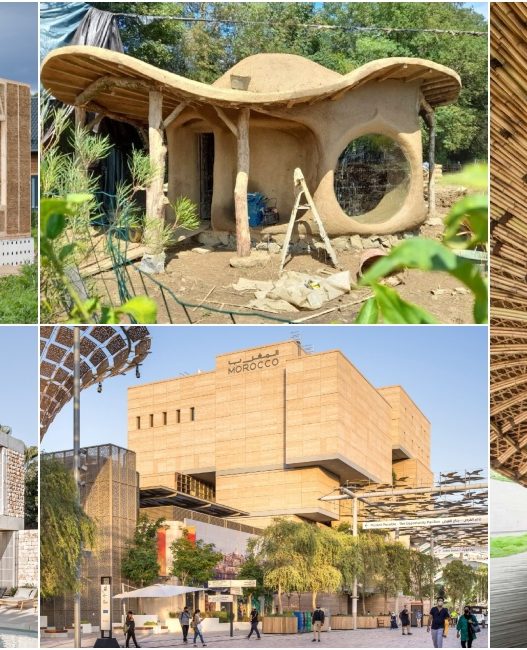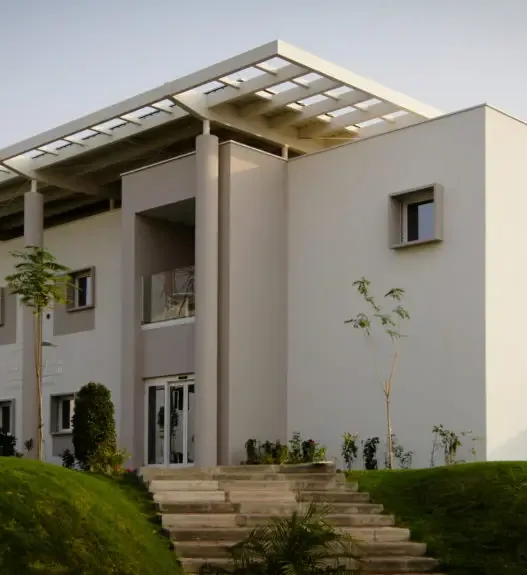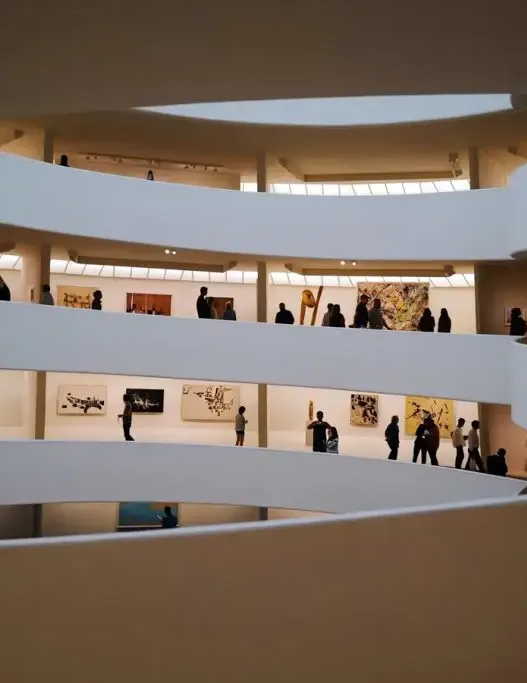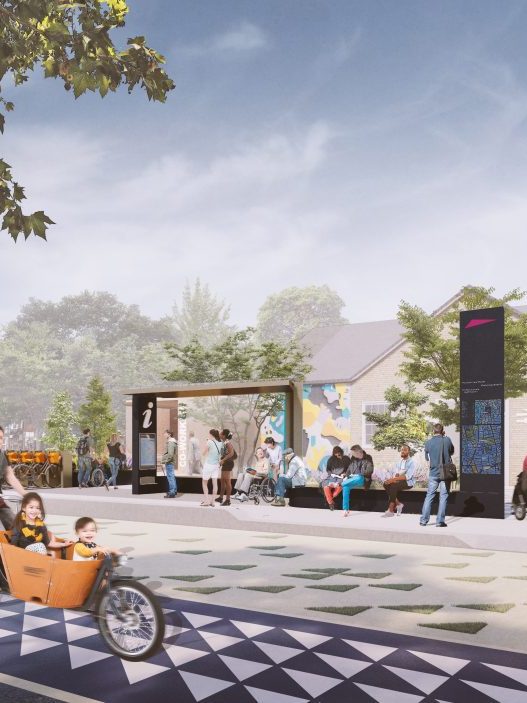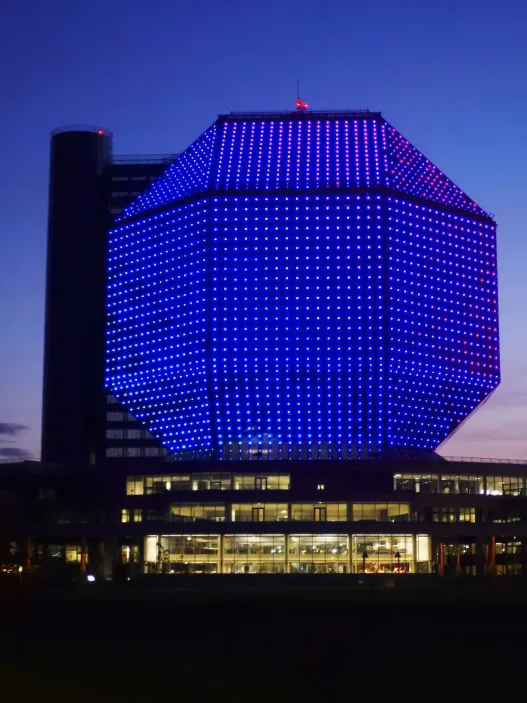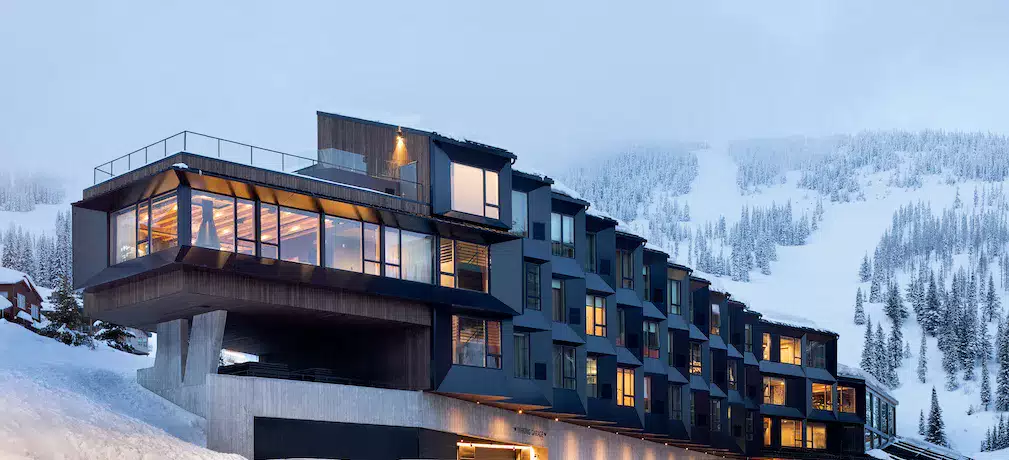The Industrial Revolution points to an important period in human history from the end of the 18th century to the beginning of the 19th century. It has transformed societies from agricultural economies to industrial power centers and fundamentally changed the way people live and work. This transformation has laid the foundations of the modern world by bringing innovations, economic changes and radical changes in social structures. Industrial revolutionUnderstanding what enables us to understand the complex relationship between technology, society and the built environment.

Overview of the industrial revolution
In essence, the industrial revolution is characterized by the transition from handcrafted goods to mass production, which is facilitated by machines. EnglandThis movement started in Europe and North America with the combination of technological advances, access to natural resources and the establishment of new economic systems.or spread. The involvement of factories has revolutionized the production processes and has created a demand for labor by attracting people from rural areas to city centers to look for a job.
This period is usually divided into two stages: 17001800 from the end ofThe first stage up to the middle of the s are focused on textile, steam power and iron; 18001900 from the end ofThe second stage, up to the beginning of the year, was the scene of developments in steel production and electricity and transportation. This evolution has not only changed the way the goods are produced, but also influenced their lifestyles, leading to a number of social and economic difficulties.
Basic innovations and their effects
Innovations during the Industrial Revolution were groundbreaking and transformative. The steam engine, perfected by James Watt, revolutionized transportation and production. By powering locomotives and steamships, it significantly reduced travel time and increased trade. Spinning machine and electric loom made textile production mechanized, enabling the fabric required for the production of clothing to be produced faster and cheaper.
Another critical innovation was the development of the factory system. This system centralized production in one place, allowing for greater efficiency and the opportunity to produce goods on a large scale. Later, the introduction of assembly lines paved the way for modern production techniques by facilitating the production processes.
These innovations not only increase productivity; It also reshaped economies. While the nations that embraced industrialization experienced economic explosions, those who were left behind often faced difficulties. This technological progress eventually led to an increase in the availability of consumer goods, changing the way people interact with products and thus with each other.
Socioeconomic changes
The industrial revolution has brought about significant socioeconomic changes that still resonate today. As factories multiplied, they created demand for labor, causing people to migrate from rural areas to cities. This urban migration resulted in a demographic change with the rapid and often erratic growth of cities.
The workforce varied from men, women, and children who worked long hours in dangerous conditions, often in exchange for inadequate wages. This exploitation resulted in reforms that improved working conditions and created labor laws, leading to the rise of workers’ movements and pressure for workers’ rights.
Moreover, the expansion of the middle class left its mark on this period. As industries evolved, many individuals found new opportunities for economic progress. This emerging middle class began to influence culture, politics and social norms by demanding more rights and more right to speak in the administration.
Urbanization trends
Urbanization was one of the most visible and effective changes during the industrial revolution. As factories were established, cities became the epicenter of economic activities and attracted people from far away. This rapid urban growth has led to the development of new infrastructures such as roads, bridges and public transport systems.
But the rapid increase in population often surpassed the development of adequate housing and sanitation. Many city dwellers lived in overcrowded and unhealthy conditions, which led to public health crises. This sharp contrast between the wealth of industrialization and the poverty of many workers has encouraged social reform movements that are trying to eliminate these inequalities.
The urban landscape itself has also transformed and architectural styles have been adapted to meet the needs of the moving workforce. Factories, warehouses and rental buildings have become characteristic features of cities, pointing to radical changes in living conditions and social structures.
Architectural responses to change
Industrial revolutionThe architectural responses to what was given were as dynamic as the changes it brought with it. With the rise of factories, architects had to consider new requirements for industrial spaces. Large, open layout plans became necessary for production and led to the design of large factory buildings. The use of iron and glass in construction, 1851It enabled innovative designs that showcase the possibilities of modern materials such as the Crystal Palace.
Public buildings also reflected the industrial spirit with large civil structures symbolizing progress and modernity. The Beaux-Arts style, which is often seen in museums, banks and train stations, is characterized by its splendor and detailed decorations. These structures not only served functional purposes, but also functioned as monuments of the successes of the time.
Moreover, the social difficulties brought about by rapid urbanization have led to the development of new housing solutions. To meet the influx of workers, rental houses were built, often without paying much attention to living conditions. Over time, this situation led to movements that advocated better urban design, affecting concepts such as parking spaces and community planning.
As a result, the Industrial Revolution was a complex and versatile period that deeply reshaped the world. From innovations in technology to comprehensive socioeconomic transformations, its effects continue to be felt today. Understanding this period provides invaluable information about the dynamic relationship between society, economy and architecture and emphasizes the ongoing evolution of human life in the face of technological advances.
Rise of the factory system
The transition from handwork to machine-based production points to an important change known as the rise of the factory system in human history. This transformation began in the late 18th century and led to radical changes in society, economy and the fabric of daily life. Factories have become symbols of industrial progress, fueling urbanization and redefining labor, while at the same time bringing a new set of challenges and opportunities for both workers and societies.
Transition from agriculture to industry
As societies transition from agricultural economies to industrial economies, where agriculture is the primary source of livelihood, there have been various factors that catalyze this transition. The Agricultural Revolution paved the way by developing agricultural techniques and increasing food production. Since fewer people are needed to cultivate the land, many have sought jobs in developing cities, which led to a significant population change.
Industrial Revolution, such as steam engine and mechanized loomsThe innovations have accelerated this change even more. These developments enabled mass production, which significantly increased productivity and output. As the factories sprouted, it attracted workers who were looking for better wages and opportunities than rural life could offer. But this change also led to the difficulties of adapting to the crowded living conditions and a new urban lifestyle.
Factory layout and design
The design and placement of factories has played a crucial role in maximizing productivity and productivity. The first factories were usually simple structures with open spaces filled with machines. Over time, architects and engineers began to understand the importance of careful design in factory operations.
Factories are typically organized to streamline workflows, machines are organized to minimize movement and maximize output. The assembly line concept, which has been popularized by companies such as Ford, revolutionized this approach, allowing sequential production processes that significantly shortened production time.
Moreover, considerations for safety and worker comfort have increasingly influenced factory design. Features such as adequate lighting, ventilation and even resting areas have begun to emerge to reflect the increasing awareness of the importance of employee welfare in maintaining productivity.
Worker housing provisions
The need for adequate housing has become very important as the factories attract a large number of workers to urban areas. The rapid influx of workers created a housing crisis in many cities, leading to overcrowded and unhealthy living conditions. In contrast, some factory owners took on the task of providing housing to their workers.
These provisions vary greatly. Some factories built communities complemented by houses, schools and shops to create a stable workforce. These company towns aimed to develop a sense of belonging and loyalty among workers. However, as workers often find themselves living under the supervision of their employers, they have brought with them concerns about control and addiction.
In contrast, many workers were left to take care of themselves in urban expansion, which led to the development of slums, which were characterized by poor living conditions. This sharp contrast underlined the social inequalities that emerged with industrial growth.
Impact on Urban Infrastructure
The rise of the factory system has dramatically reshaped the urban infrastructure. Cities expanded rapidly to meet the influx of workers and demands of industrial production. Roads, railways and canals have been developed or improved to facilitate the transport of goods and people.
This expansion often went beyond the planning and resources needed to support it. Many cities have led to health crises and social unrest by fighting inadequate healthcare, lack of clean water and inadequate public services. The strict realities of urban life promoted reform movements aimed at improving living conditions and defending workers’ rights.
As cities developed, urban planners began to realize the importance of integrating green spaces, public transport and community services into urban landscape. This change marked the beginning of modern city planning as leaders attempted to create more livable environments in the midst of industrial chaos.
Factory Oriented Housing Sample Studies
Examination of specific case studies reveals different approaches to factory-oriented housing and their long-term effects. A noteworthy example is the UK developed by the Cadbury family for chocolate factory employeesin the town of Bournville. Bournville is designed with large green spaces, schools and recreational facilities that promote a healthy and balanced lifestyle.
In contrast, ChicagoThe Pullman company in the Daki created an exemplary town for its workers, complete with beautiful houses and facilities. However, the town’s strict regulations and the company’s control over the townspeople resulted in a significant worker’s unrest, resulting in the 1894 Pullman strike.
These case studies show the complexity of factory-guided housing. Although some initiatives aim to improve the lives of workers, they often reveal the complex relationship between industrial growth, housing and social dynamics. Thanks to these examples, we can better understand how the rise of the factory system not only transforms economies, but also shapes societies and the lives of countless individuals.
Rental Housing: A Response to the Request
Rental residences played an important role in urban development, especially during periods of rapid population growth. Originally designed to meet the influx of people who moved to cities to work, rental houses represent both the challenges and innovations of urban life. As cities expanded, the need for affordable housing has also increased, and this has often led to the construction of cramped but necessary living spaces.
Definition and Properties of Tenements
Tenement residences typically refer to multi-family residences that accommodate several households in a single building. These structures are most commonly associated with cities such as New York in the late 19th and early 20th centuries, where especially the influx of immigrants created an urgent need for affordable housing. Characteristically, rental houses usually have five to six floors, have narrow corridors and small units, often lacking enough light and ventilation.
The design of rental houses was a direct response to the demand for housing; They were built quickly and economically. Many units had common facilities such as bathrooms and kitchens to maximize space. While these residences provide shelter for many people, the layout and construction often prioritized density rather than livability, leading to unique challenges faced by residents.
Health and safety concerns
The rapid construction of rental houses has often caused health and safety standards to be ignored, which has caused numerous problems for tenants. Overcrowding was a major problem, many families stuck in small spaces, which led to the spread of diseases. Poor ventilation and inadequate sanitation facilities further increased these health risks, creating unhygienic living conditions.
In response to these conditions, various public health movements emerged, advocating better living standards. Laws were enacted to improve rental house conditions, including light and weather requirements in apartments. These efforts have emphasized the need for safe and healthy living environments and paved the way for future housing arrangements.
Social effects of tenement life
Living in rented houses had deep social effects that shaped communities formed in these densely populated areas. Rental homes often represent challenging economic conditions, but they have also promoted resilience and solidarity among residents. Neighbors trusted each other for support and shared resources and information in a way that strengthened their social ties.
However, the experience of living in rental houses was not uniform. Different ethnic groups have often come together to lead to the formation of cultural settlements. While this situation created a sense of belonging, it could also lead to social tensions and separation. The dynamics within the tenant communities reflected broader social problems such as class struggles, immigration and quest for identity.
Innovations in Tenement Design
In response to the challenges faced by the tenants, architects and city planners began to innovate. New designs have tried to improve their living conditions while maintaining the affordability of rental homes. An important development was the introduction of ‘dumbbells’ rental houses, which have a narrow design with better ventilation and light air chimneys.
In addition, laws were enacted to enforce building regulations that enhance safety and hygiene. These innovations not only aimed to improve the quality of life of tenants, but also set a precedent for modern housing development. The evolution of rental housing design reflects increasing awareness of the importance of habitable spaces in urban environments.
Important examples of rental housing
A few important examples of rental housing show the evolution of this architectural style and its impact on urban life. New YorkThe Taki Lower East Side is one of the most famous areas where rental houses are built to accommodate waves of immigrants. The Tenement Museum, located here, preserves the history of these buildings and offers tours that emphasize the lives of its former inhabitants.
ChicagoThe development of the ‘Chicago School’ architecture has led to innovative housing designs that develop traditional rental home layouts. These buildings usually have large windows and open floor plans, focusing on light and space.
Thanks to these examples, we see how rental houses are transformed over time, how they reflect the needs and demands of the city population while meeting the urgent demand for housing in growing cities.
Architectural styles affected by industrialization
The Industrial Revolution marked a very important change in society by affecting not only the economy and labor force, but also the way we build and design our environment. As factories rose and cities expanded, architecture began to reflect these changes and gave birth to new styles that integrate industrial elements with traditional aesthetics. In this section, various architectural movements that emerged as a reaction to industrialization are examined by emphasizing their basic features and real-world applications.
Gothic Awakening and Industrial Elements
Gothic awakening emerged in the late 18th and early 19th centuries with admiration for medieval architecture and appreciation of their complex designs. However, with the spread of industrialization, architects began to include industrial materials and techniques in this romantic style. Cast iron and glass have become prominent features, allowing for larger windows and opener spaces.
LondonBuildings such as the Crystal Palace in the city exemplify this fusion by displaying the magnificent use of iron and glass while preserving gothic aesthetics with pointed arches and decorative details. While these structures reflected the innovation of the industrial age, they also aroused a sense of history and tradition. The Gothic Awakening, therefore, served as a bridge between the old and the new, blending fancy craftsmanship with emerging industrial abilities.
The emergence of Italian style
19The Italian style, which came to the fore in the middle of the 10th century, the industrial revolutiongreatly influenced by the progress of This style is inspired by Italian villas, which are characterized by low pitched roofs, high windows and decorative cornices. The availability of new materials, such as bricks and terracotta, allowed detailed details describing this aesthetic.
In cities like San Francisco, Italian-style buildings have become a symbol of wealth and sophistication. The use of mass-produced architectural elements has made the style available for a wider range of developers, enabling builders to quickly create fancy facades. The Italian-style trend showed how industrialization can democratize beauty in architecture, allowing even middle-class neighborhoods to have elegant designs.
Role of Beaux-Arts style
Beaux-Arts style, which emerged in the late 19th century, French École des Beaux-ArtsHe was greatly influenced by the principles of In and combined classical architecture with modern construction techniques. This style is characterized by magnificence, symmetry and the use of decorative elements such as sculptures and elaborate moldings.
The emergence of steel skeleton construction, New York Public Library and ParisIt allowed the creation of monumental structures such as one Palais Garnier. These buildings not only served practical functions, but also functioned as symbols of progress and cultural success. The Beaux-Arts architecture, while honoring classical traditions, outlined the spirit of industrialization by displaying the confidence and ambition of societies that embrace modernity.
The effects of the arts and craft movement
The art and craft movement emerged as a reaction against the industrialization of design and production, and advocated craftsmanship and simplicity. This trend, which glorifies handmade products and tries to reunite architecture with nature, has often incorporated complex woodworking, stone carvings and organic forms into designs.
Leading names such as William Morris emphasized the importance of quality and human touch in architecture. current, englandIt has impressed buildings that are compatible with its surroundings and contain handmade details, such as the red house in the city. Although the movement has emerged as a critique of industrialization, its emphasis on meaningful design has left a permanent legacy in architecture and reminded us of the value of art in a world that is increasingly mechanized.
Modernist responses to industrial architecture
As the 20th century progressed, the modernist movement emerged as a bold response to the complexity of industrialization. Modernist architects, who refused to decorate and embraced functionalism, tried to reflect the realities of contemporary life through minimalist forms and innovative materials.
Le CorbusierNin Villa SavoyeBuildings like U exemplify this approach by displaying clean lines and open spaces that prioritize functionality rather than decoration. The use of reinforced concrete allowed the creation of iconic skyscrapers and public buildings, allowing new structural possibilities. The adoption of industrial materials by modernism has represented a change in architectural philosophy, redefining how we interact with built environments while celebrating the potential of technology.
In summary, the impact of industrialization on architectural styles is deep and versatile. Gothic AwakeningFrom the romance to the functional clarity of modernism, every movement reflects a unique response to the changing landscape of society by showing how architecture can shape the world around us and how it can be shaped by it.
The Role of the State and Legislation
Government and legislation have always played an important role in shaping our built environment. Governments influence how we design, build and live in our spaces through various laws, regulations and initiatives. Understanding this interaction helps us understand the architectural landscape around us and the policies that guide its development.
Early Housing Regulations
The roots of housing regulations date back to ancient civilizations, where concerns about security and social welfare mobilized the first forms of government. For example, medieval EuropeLocal authorities have set rules to prevent fires and ensure structural integrity. These early arrangements were usually simple and focused on basic safety measures, such as materials used in construction.
As cities grew, so did the need for more comprehensive regulations. By the 19th century, rapid urbanization led to overcrowded living conditions, prompting governments to intervene. The enactment of housing regulations has aimed to address issues such as cleaning, ventilation and overcrowding. For example, New YorkThe Taki Tenement House Act has tried to improve living conditions in rented homes in the city and necessitated the provision of windows, bathrooms and fire escapes.
These initial regulations have formed the basis of modern housing laws by emphasizing the government’s responsibility to provide safe and livable environments for all citizens.
The effect of the public health law
EnglandThe Public Health Act in 2019 marked an important turning point in the relationship between government and housing. The law was born from horrific public health crises, especially during the cholera outbreaks. The law recognized that poor living conditions contributed to the spread of the disease and tried to improve urban environments.
The law has helped reshape the urban landscape by establishing sanitary boards and promoting better waste management and clean water supply. It encouraged the construction of more sanitary housing and influenced infrastructure design, leading to wider streets and better sewer systems. The law’s emphasis on public health has not only addressed immediate concerns, but also promoted a long-term commitment to improving living conditions.
This legislation has been the pioneer of modern health and safety laws, reflecting the importance of government intervention in the protection of public welfare through urban design.
Zoning Laws and City Planning
The zoning laws emerged as an important tool for city planning in the early 20th century. These laws determine how the land can be used and affect everything from residential neighborhoods to commercial centers. The primary purpose of zoning is to promote regular and sustainable urban growth by separating incompatible land uses.
For example, zoning can maintain the quality of life of families by preventing the construction of industrial facilities in residential areas. It also plays a role in determining the development intensity that can affect traffic, public services and environmental sustainability.
Moreover, zoning laws can reflect social values and priorities. In cities such as New York, zoning regulations have developed to encourage affordable housing projects, mixed-use developments and green areas. These laws are not just about regulations; It shapes the character and vitality of urban areas, affecting where people live, work and play.
Government-supported housing initiatives
State-supported housing initiatives have become important in addressing the housing crisis faced by many urban areas. Programs designed to provide affordable housing often include cooperation between federal, state and local governments. United states of americaEnterprises such as the housing selection coupon program in
These initiatives often include financing for developers to build affordable units, tax credits and mass housing projects. For example, the low-income housing tax loan program has encouraged the construction of thousands of affordable housing across the country. Such programs not only provide shelter, but also aim to promote inclusive communities where residents can access opportunities and resources.
Governments can fight homelessness by investing in affordable housing, reduce poverty and increase the overall welfare of the urban population.
Long-term effects on urban housing policy
The long-term effects of government intervention in housing are deep. As cities continue to evolve, today’s policies will shape future urban landscapes. The interaction between legislation and housing development affects everything from architectural styles to social cohesion.
For example, the legacy of past housing policies can be seen in the separation of neighborhoods and inequalities in access to resources. Understanding these historical contexts is crucial to policy makers who aim to create egalitarian housing solutions.
Moreover, while cities are grappling with problems such as climate change and population growth, innovative policies will be required. Sustainable urban design, flexibility planning and community participation are becoming more and more central themes in housing policy discussions.
Governments should balance the interests of developers, residents and the environment while promoting lively and inclusive communities. Through thoughtful legislation and strategic initiatives, they can guide the evolution of urban dwellings towards a more sustainable and egalitarian future.
Legacy and Lessons of Industrial Housing Design
The legacy of industrial housing design is a rich tapestry woven from the threads of history, innovation and social change. As cities developed, the need for fertile, practical and livable areas for their increasing population has also increased. Lessons from past industrial housing efforts continue to influence contemporary architecture and provide insights into how urban environments can better serve its inhabitants. This research examines the evolution of urban housing concepts, the ongoing validity of historical designs, the importance of sustainability, their reflections on social equality and future orientations in urban housing design.
Evolution of urban housing concepts
The evolution of the concept of urban housing is deeply intertwined with the rise of industrialization. In the late 18th and early 19th centuries, rapid urban growth coincided with the industrial revolution and led to the development of workers’ housing. Initially, buildings were built quickly and cheaply to accommodate the thriving workforce. These structures were often cramped and lacked basic possibilities that reflected the harsh realities of industrial life.
Over time, the reactions to these conditions led to significant changes in urban housing design. Reformers have begun to defend better living conditions, which has led to the emergence of rental housing offering improved cleanliness and ventilation, although still inadequate. The 20th century witnessed the emergence of modernist principles that focus on functionality and the use of new materials such as concrete and steel. Architects such as Le Corbusier influenced urban planning around the world by advocating designs that prioritized light, air and green space.
Today, urban housing concepts continue to develop with lessons learned from the past. The focus has shifted towards creating inclusive, adaptable spaces that promote society and prosperity. While cities grapple with problems such as gentrification and housing shortages, the evolution of urban dwellings remains a vital topic of debate in architecture and urban planning.
The interest of historical designs with today
Although the world has changed significantly since the beginning of industrial housing, many historical designs continue to resonate among contemporary architects and urban planners. For example, the principles of modularity and efficiency found in early industrial designs inspire modern prefabricated housing solutions. These contemporary structures emphasize the speed of construction and economy by meeting the urgent housing needs in the rapidly growing urban areas.
It also emphasizes the aesthetic qualities, craftsmanship and local materials of historical designs, especially in the Arts and Crafts movement. Today’s architects often try to integrate these elements into modern projects and create buildings that are compatible with their environment and reflect the local heritage. This bond with history not only enriches the architectural landscape, but also feeds the sense of social identity.
Also, from the middle of the 20th century, lessons learned from social housing, especially St. LouisThe failures and successes of projects such as Pruitt Igoe continue to inform the current housing policies. Understanding what went wrong in the past helps develop more sustainable and socially equitable housing solutions today.
Sustainable applications in modern residences
Sustainability has become one of the cornerstones of modern housing design, inspired by both historical practices and contemporary innovations. The importance given to productivity by the industrial age is now applied to energy use, materials and city planning. Architects are increasingly using green technologies such as solar panels and rainwater collection systems to minimize environmental impact.
Modern dwellings also reflect a transition towards biophilic design, which aims to more closely associate residents with nature. Integration of green spaces, natural lighting and ventilation not only increases aesthetic appeal, but also promotes mental well-being. The use of reclaimed materials and low-impact construction techniques often reflects the resourcefulness of former builders based on local sources.
Real-world applications of these sustainable applications are Milano, which includes vertical gardens to improve air quality and reduce heat.It can be seen in projects such as Bosco Verticale. Such examples show how modern architects reinterpret the concepts of industrial housing to create livable, sustainable environments that meet the needs of today’s society.
Reflections on social equality in housing
Social equality in housing design is an urgent issue based on lessons learned from industrial housing. Historically, many industrial housing projects have been stigmatized by inequality and discrimination and often reflect broader social injustices. Today, architects and city planners are trying to eliminate these inequalities with inclusive design practices.
Contemporary housing projects aim to create mixed-income communities that promote social interaction and diversity. This approach not only struggles with isolation, which is often seen in economically stratified neighborhoods, but also promotes a sense of belonging among residents. For example, developments that integrate affordable housing with market-price units enrich the social fabric by enabling various socioeconomic groups to coexist.
Mass housing initiatives, such as the transformation of old industrial areas into mixed-use developments, further demonstrate this commitment to social equality. Such projects generally prioritize community contribution, ensuring that the voices of those who are most affected by housing policies are heard and taken into account. This change towards participatory design is a very important lesson learned from the past and emphasizes the importance of creating spaces that serve all members of the society.
Future orientations in urban housing design
Looking ahead, the future of urban housing design is preparing to embrace countless challenges and opportunities. As cities face increasing population density, climate change and social unrest, architects should think creatively about how to promote resilience and adapt to these changing conditions.
A promising direction is the integration of smart technologies into housing design. Equipped with sensors and automation systems, smart homes can increase energy efficiency and promote sustainable living practices. In addition, city planners are exploring concepts such as 15-minute cities where basic services are a short walk or cycling distance, reducing dependence on cars and promoting healthier lifestyles.
Moreover, the importance given to society-oriented design will likely continue to increase. Future housing projects can create environments that promote cooperation and social interaction by prioritizing common areas and facilities. By learning from the past and adopting innovative solutions, new generation urban dwellings can create vibrant, egalitarian and sustainable communities for everyone.
In summary, the legacy of industrial housing design provides a valuable base for understanding contemporary challenges and opportunities in the area of urban housing. By thinking about historical lessons, giving priority to sustainability and advocating social equality, we can draw a path towards a more inclusive and resilient urban future.



